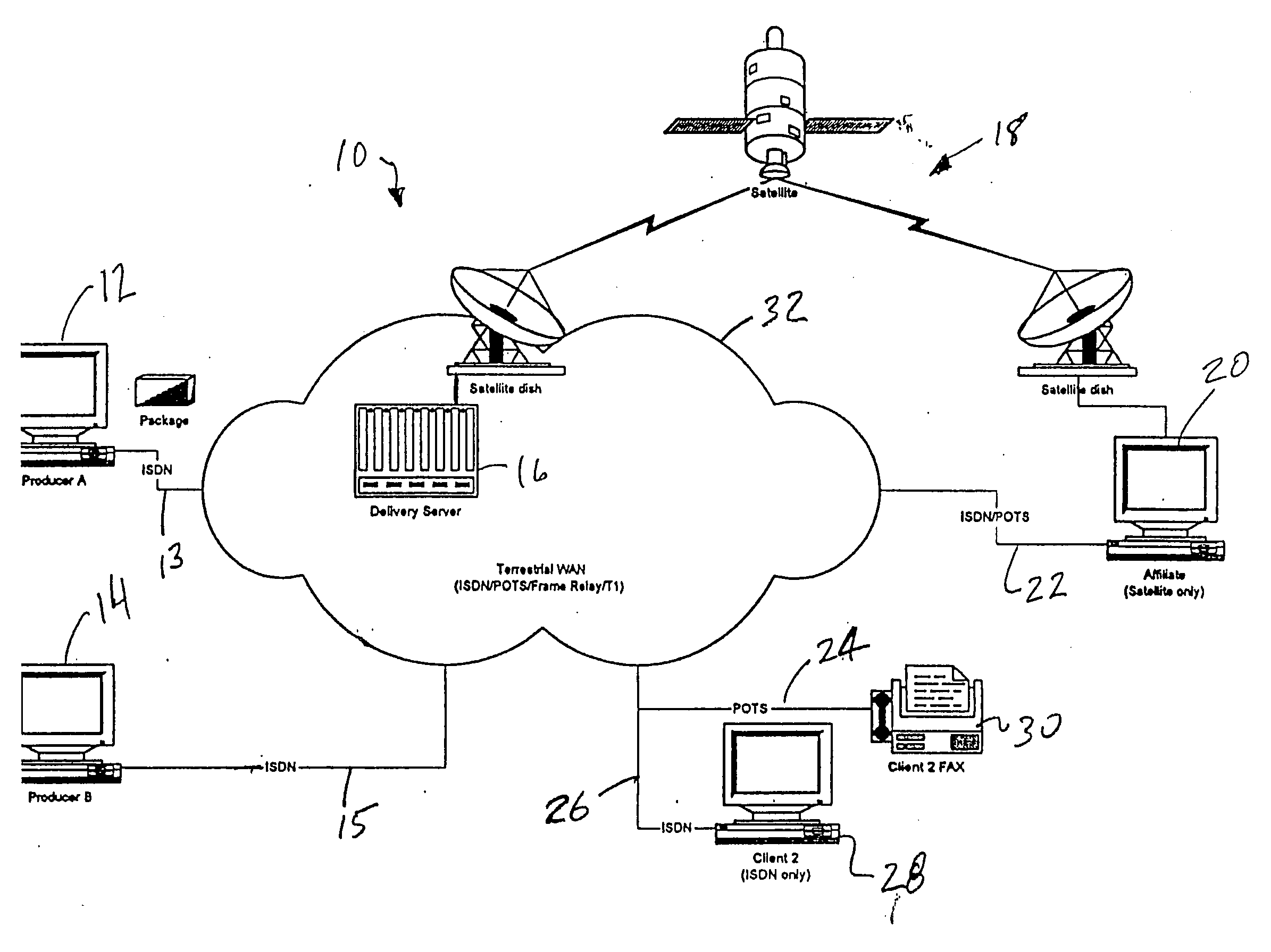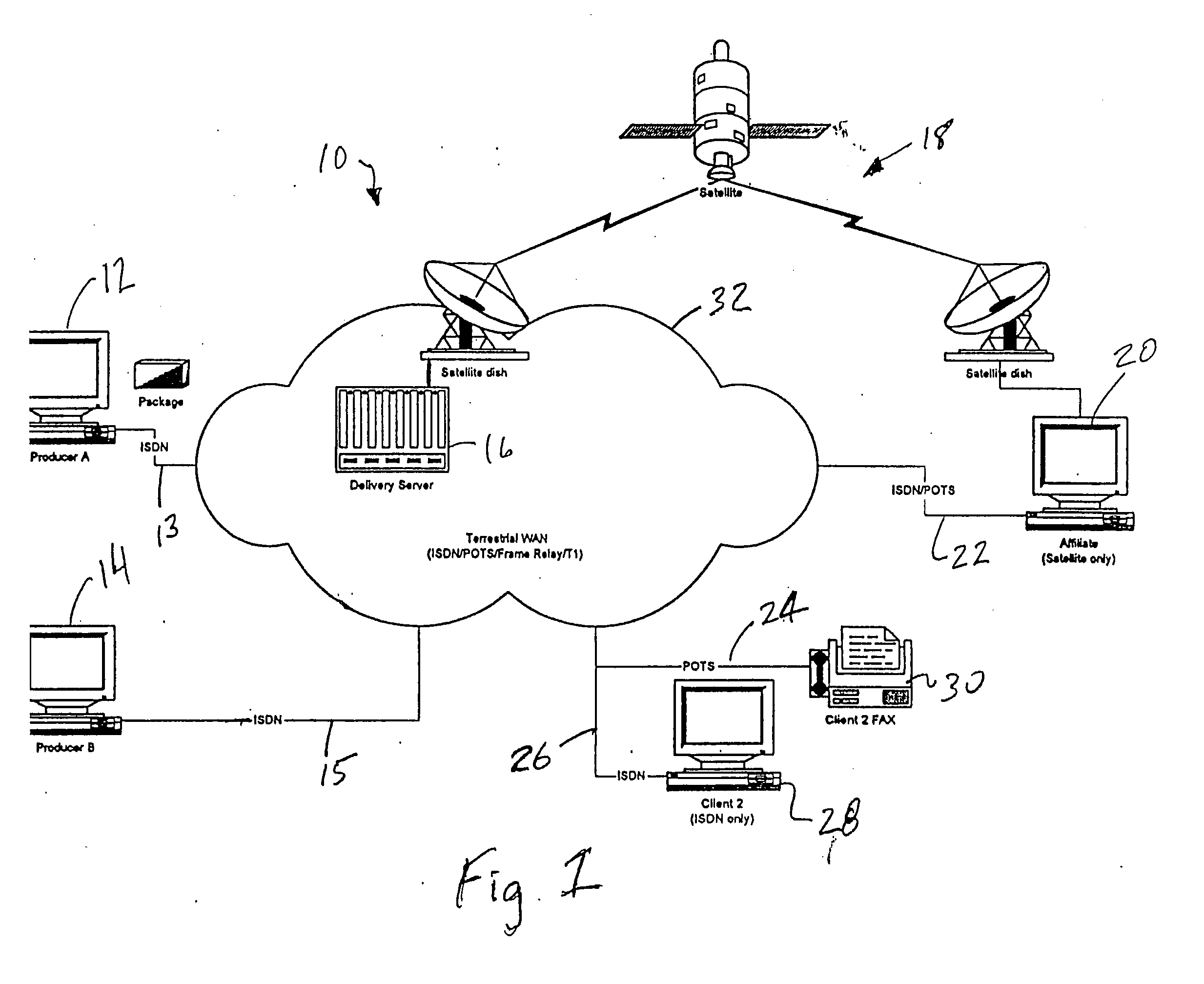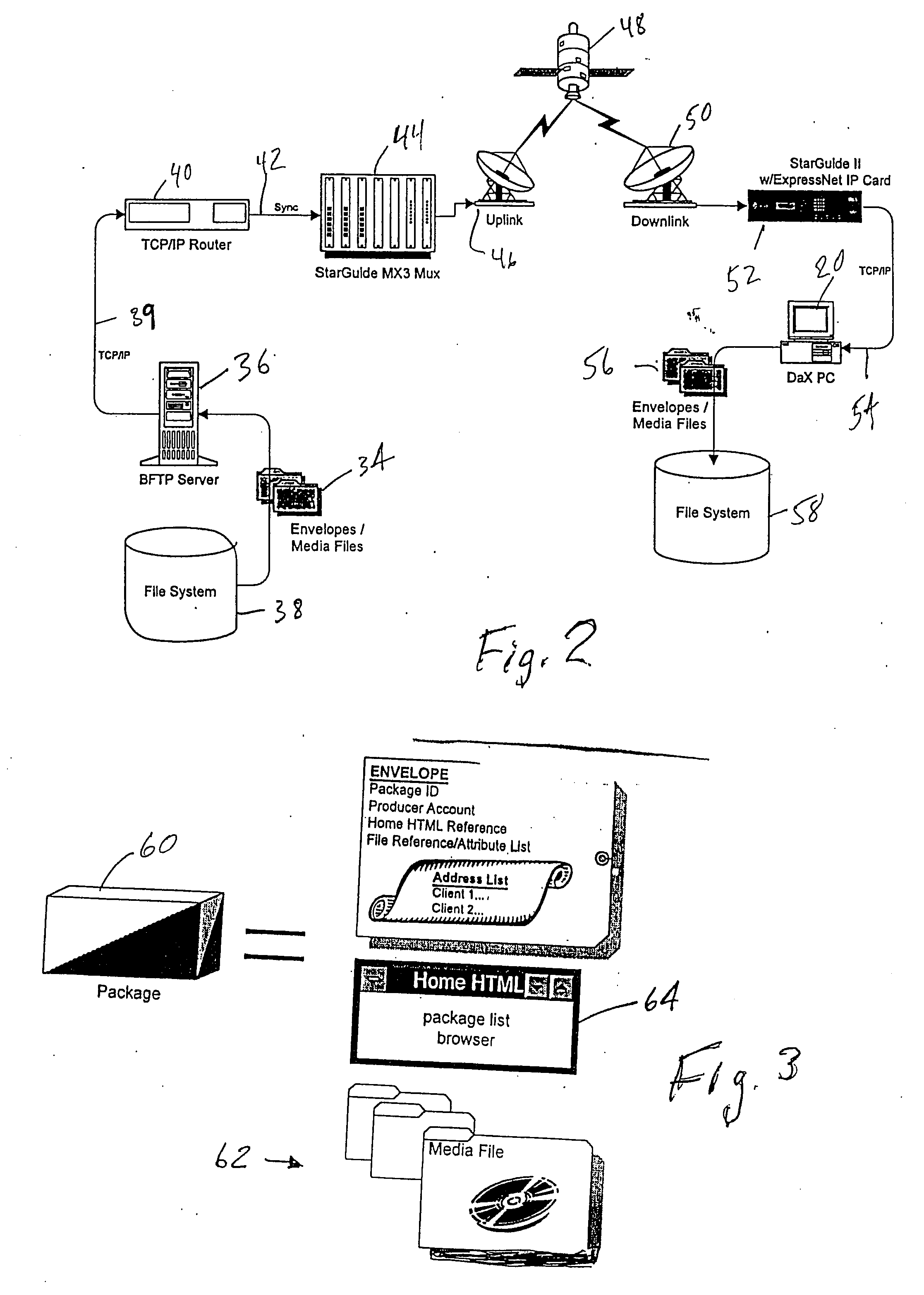Method and apparatus for push and pull distribution of multimedia
a technology of multimedia and push-pull distribution, applied in the field of multimedia distribution, can solve the problems of manual system, limited reach, high cost, etc., and achieve the effect of reducing or eliminating, reducing or eliminating associated communication expenses
- Summary
- Abstract
- Description
- Claims
- Application Information
AI Technical Summary
Benefits of technology
Problems solved by technology
Method used
Image
Examples
Embodiment Construction
[0052] With reference to FIG. 1, the applicants' preferred system and method generally consists of producer PC workstations, e.g., 12, 14, connected by two-way terrestrial telecommunications lines, e.g., 13, 15, to a delivery server, which is connected by a one-way satellite connection, generally 18, to satellite affiliate PC workstations, e.g., 20, and by two-way terrestrial telecommunications lines, e.g., 22, 24, 26, to both the satellite affiliates, e.g., 20, and general clients, e.g., 28, 30. The two-way communications lines, 13, 15, 22, 24, 26 may be POTS (plain old telephone system), ISDN, Frame Relay, xDSL, or T1 lines. The two-way communications lines 13, 15, 22, 24, 26 may connect to a terrestrial WAX (wide area network) 32, to which the delivery server 16 is also connected. The WAN 32 may consist of a private network (such as an intranet) or the public Internet.
[0053] The one-way satellite connection 18 provides a high-bandwidth vehicle for distribution of media files, pa...
PUM
 Login to View More
Login to View More Abstract
Description
Claims
Application Information
 Login to View More
Login to View More - R&D
- Intellectual Property
- Life Sciences
- Materials
- Tech Scout
- Unparalleled Data Quality
- Higher Quality Content
- 60% Fewer Hallucinations
Browse by: Latest US Patents, China's latest patents, Technical Efficacy Thesaurus, Application Domain, Technology Topic, Popular Technical Reports.
© 2025 PatSnap. All rights reserved.Legal|Privacy policy|Modern Slavery Act Transparency Statement|Sitemap|About US| Contact US: help@patsnap.com



